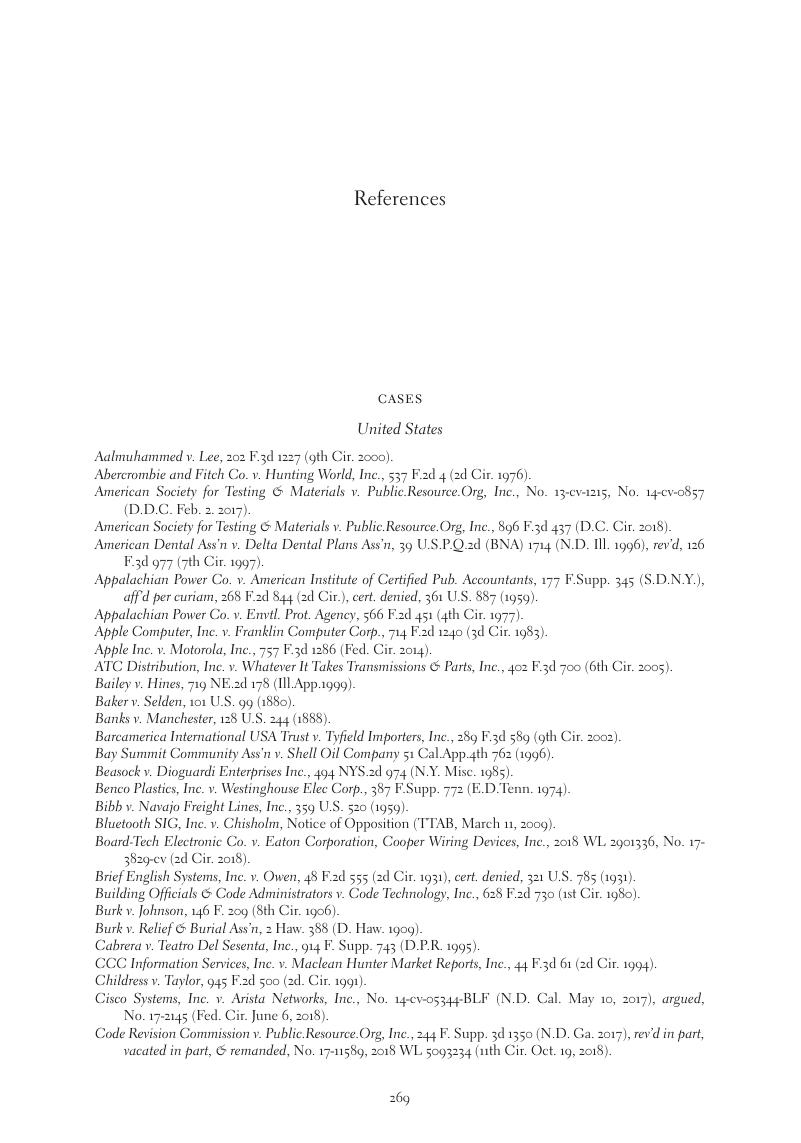 The Cambridge Handbook of Technical Standardization Law
The Cambridge Handbook of Technical Standardization Law Book contents
- The Cambridge Handbook of Technical Standardization Law
- The Cambridge Handbook of Technical Standardization Law
- Copyright page
- Contents
- Figures
- Tables
- Contributors
- Preface
- Acknowledgements
- Introduction
- PART I Standardization and the State
- PART II Standardization, Health, Safety and Liability
- PART III Copyright and Standards
- PART IV Standards and Software
- PART V Trademarks, Certification and Standards
- References
- Index
- References
References
Published online by Cambridge University Press: 04 September 2019
- The Cambridge Handbook of Technical Standardization Law
- The Cambridge Handbook of Technical Standardization Law
- Copyright page
- Contents
- Figures
- Tables
- Contributors
- Preface
- Acknowledgements
- Introduction
- PART I Standardization and the State
- PART II Standardization, Health, Safety and Liability
- PART III Copyright and Standards
- PART IV Standards and Software
- PART V Trademarks, Certification and Standards
- References
- Index
- References
Summary

- Type
- Chapter
- Information
- The Cambridge Handbook of Technical Standardization LawFurther Intersections of Public and Private Law, pp. 269 - 298Publisher: Cambridge University PressPrint publication year: 2019


